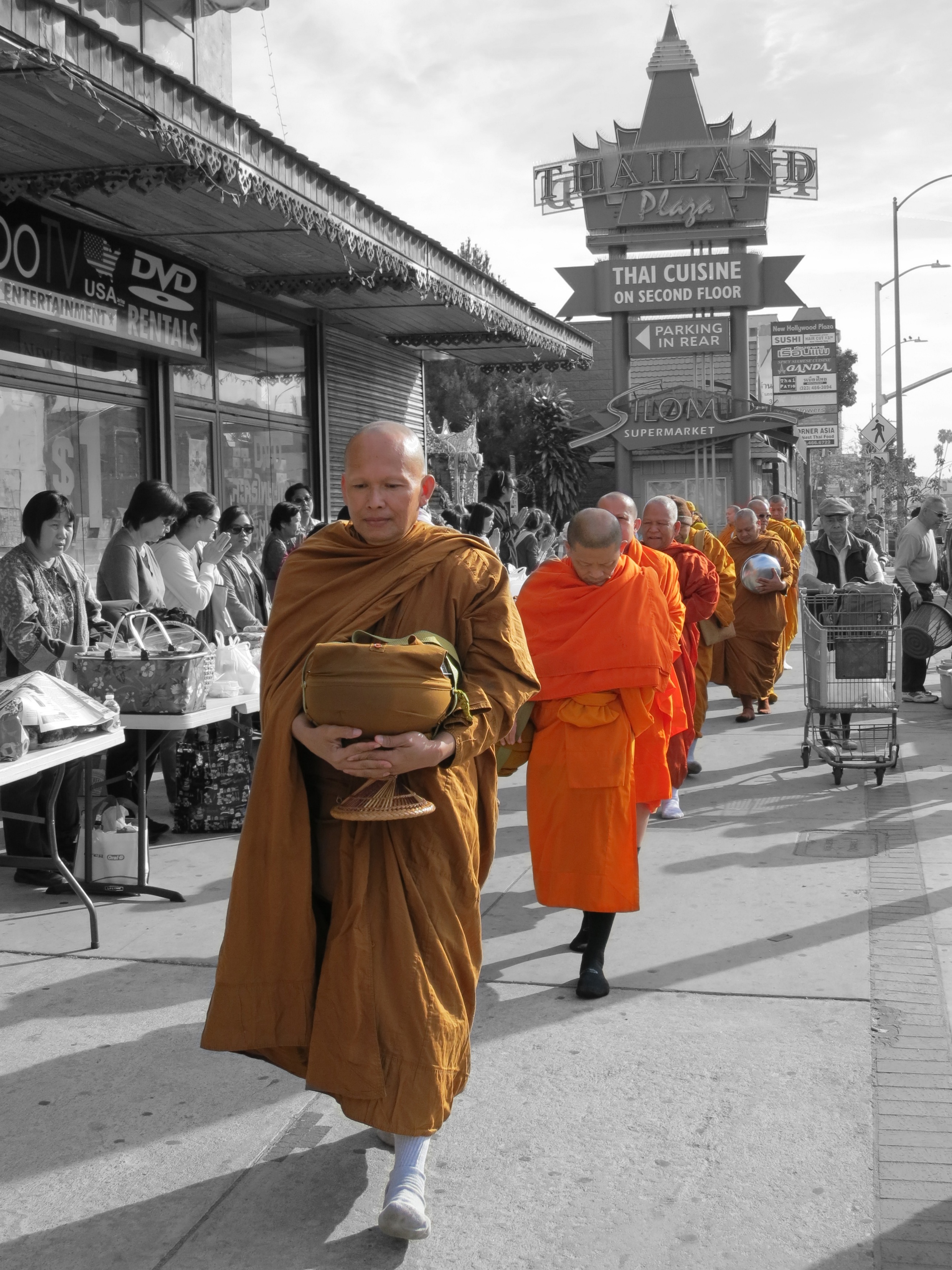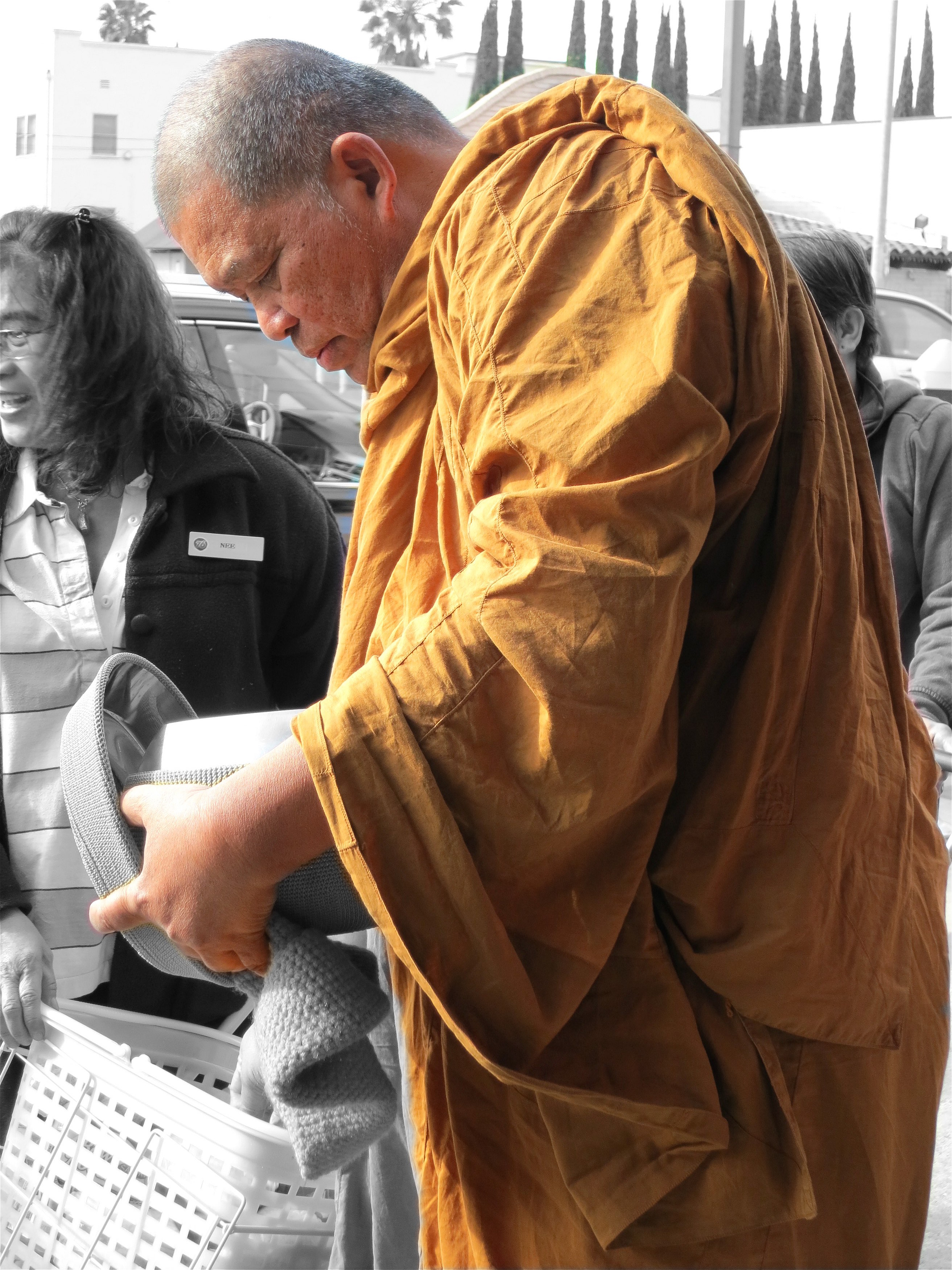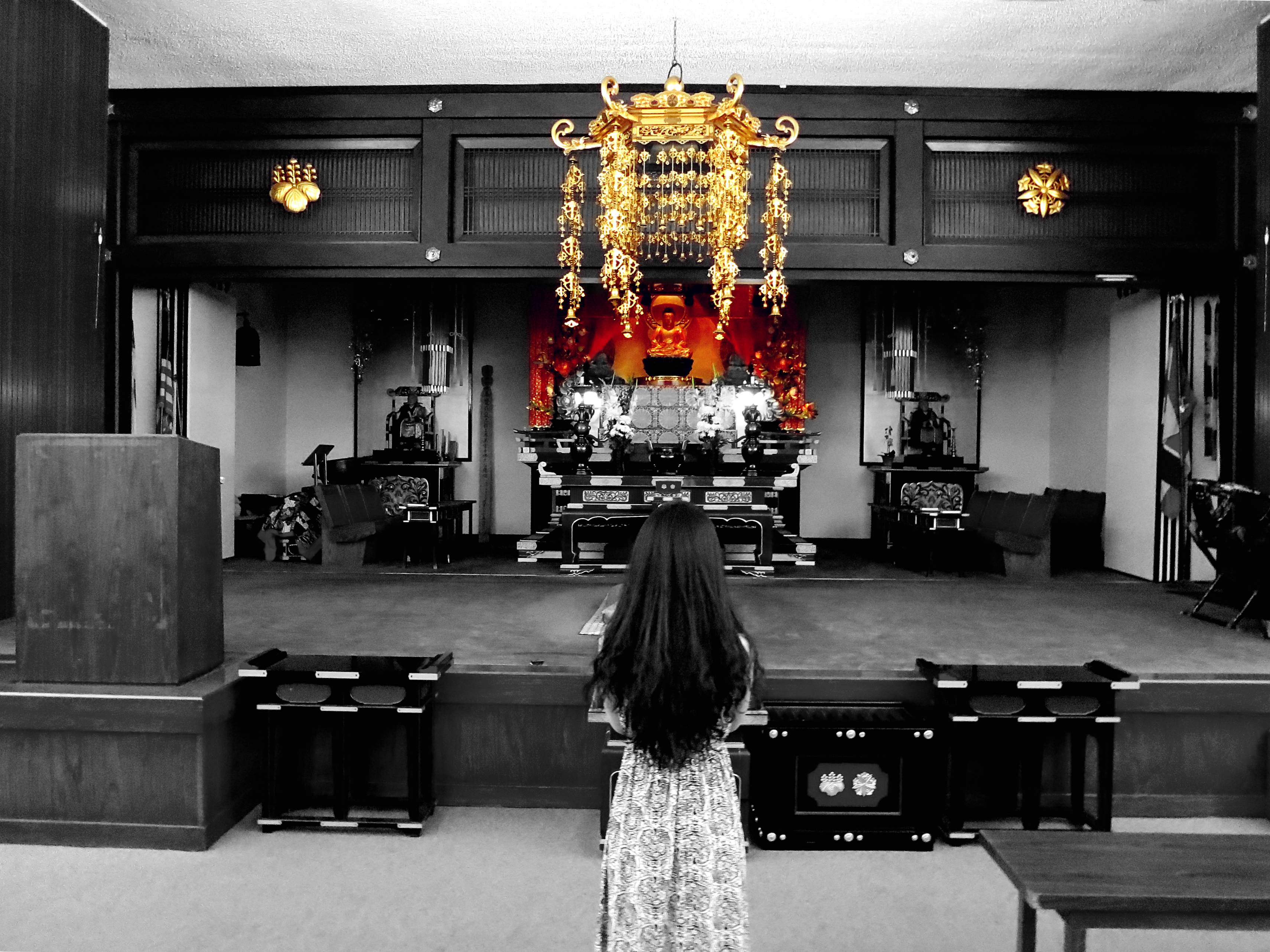Aug 2014
#Photography
#Research
Vietnam Buddhism
Research + Photography
Buddhism is not new to the US. Since 1965, the Buddhists population has grown considerably as a result of increased immigration from Asian. Immigrant Buddhist congregations in North America are as diverse as the different peoples of Asian Buddhist extraction who settled there. Today, the US is home to Chinese Buddhists, Japanese Buddhists, Korean Buddhists, Sri Lankan Buddhists, Cambodian Buddhists, Vietnamese Buddhists, and Thai Buddhists (Wikipedia, Buddhism in the United States). The culture and traditions largely remain with those immigrants and their descendants. During the fieldtrip with Corky Lee, I observed the whole process of Thai Buddhism’s morning ritual. I found that though Buddhism is one of the largest religions in the United States, the membership keeps declining and the number of Buddhist Americans never grows at the normal rate like other groups.
![]()
In Thai culture, people bow in respect to monks. On the Saturday morning in Thai town, people assembled along the streets and offered food to the monks (small portions of rice, fruit, curry, glass noodles, and occasionally a sweet cake or juice box). The monks did not say anything, but just opened the lid of their bowls, bended over slightly to allow the people put food inside, and then moved on.
![]()
![]()
After that, all the people knelt down and chanted with the monks for a few minutes.
![]()
In the article “Thai Buddhism in America: An Historical and Contemporary Overview”, Wendy Cadge and Sidhorn Sangdhanoo pointed out that the “biggest challenge Abbots most often noted was debt, accumulated both through construction projects and daily operation costs. About one-third of the Abbots we interviewed spoke openly about their temple’s debt and the extent to which it stands in the way of their future plans. Part of this debt may actually be related to the increasing number of Thai Buddhist temples in the States.” This answer is consistent with what the monks told me when I asked them about the future of Thai Buddhism in Los Angeles. From the monks’ number in a temple, from the scale and the frequency of religious activities, and from the behavior of common Buddhists, Thai undoubtedly has the most prosperous Buddhism culture among the three immigrant groups I visited, but the problem will be evident in the next ten to twenty years. If immigration from Thailand continues as the past, those temples would be able to keep operating by the donation of first generation immigrants, the majority of people who attend Buddhist temples. However, if immigrants’ number were declining, the temples would be hard to sustain by relying on the second generation who usually stop attending after they have finished high school.
![]()
![]()
![]()
![]()

In Thai culture, people bow in respect to monks. On the Saturday morning in Thai town, people assembled along the streets and offered food to the monks (small portions of rice, fruit, curry, glass noodles, and occasionally a sweet cake or juice box). The monks did not say anything, but just opened the lid of their bowls, bended over slightly to allow the people put food inside, and then moved on.


After that, all the people knelt down and chanted with the monks for a few minutes.

In the article “Thai Buddhism in America: An Historical and Contemporary Overview”, Wendy Cadge and Sidhorn Sangdhanoo pointed out that the “biggest challenge Abbots most often noted was debt, accumulated both through construction projects and daily operation costs. About one-third of the Abbots we interviewed spoke openly about their temple’s debt and the extent to which it stands in the way of their future plans. Part of this debt may actually be related to the increasing number of Thai Buddhist temples in the States.” This answer is consistent with what the monks told me when I asked them about the future of Thai Buddhism in Los Angeles. From the monks’ number in a temple, from the scale and the frequency of religious activities, and from the behavior of common Buddhists, Thai undoubtedly has the most prosperous Buddhism culture among the three immigrant groups I visited, but the problem will be evident in the next ten to twenty years. If immigration from Thailand continues as the past, those temples would be able to keep operating by the donation of first generation immigrants, the majority of people who attend Buddhist temples. However, if immigrants’ number were declining, the temples would be hard to sustain by relying on the second generation who usually stop attending after they have finished high school.



